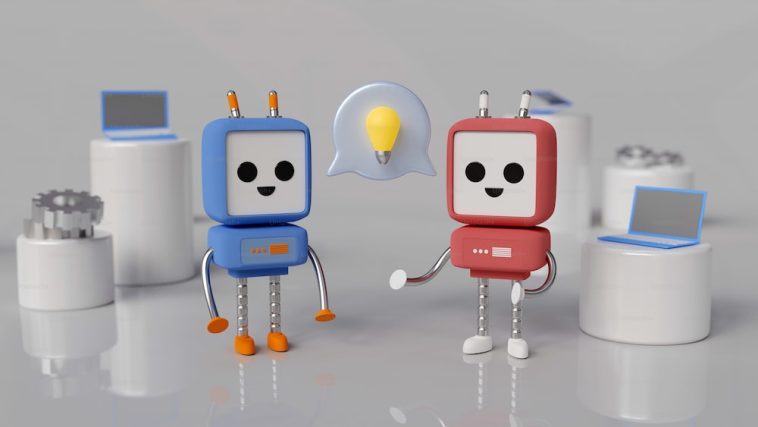Introduction.
Building a chatbot using machine learning opens up a world of possibilities for creating intelligent and interactive virtual assistants.
Machine learning, a subset of artificial intelligence, empowers chatbots to understand natural language, learn from data, and continuously improve their responses based on user interactions.
This advanced approach allows chatbots to become more human-like and deliver personalized experiences to users.
In this guide, we will explore the process of building a chatbot using machine learning, equipping you with the knowledge and tools to create a sophisticated virtual assistant.
So, let’s dive into the world of machine learning and embark on an exciting journey of chatbot development that bridges the gap between AI and human communication.
How Do I Build a Chatbot Using Machine Learning?
A chatbot powered by machine learning brings a new level of intelligence and sophistication to virtual assistants, enabling them to understand natural language, learn from data, and provide personalized responses.
Building a chatbot using machine learning opens up a world of possibilities, from customer support to marketing automation, and beyond.
In this article, we will guide you through the process of building a chatbot using machine learning, empowering you to create a virtual assistant that can engage users in meaningful and interactive conversations.
By harnessing the potential of natural language processing (NLP), deep learning algorithms, and training data, you can design a chatbot that bridges the gap between artificial intelligence and human communication.
Step 1: Choose the Right Machine Learning Framework.
The first step in building a chatbot using machine learning is selecting the appropriate framework. Popular choices include TensorFlow, PyTorch, and Keras. Consider factors such as ease of use, community support, and compatibility with your project’s requirements.
Step 2: Preprocess and Prepare Data.
Data preparation is crucial for training a chatbot model effectively. Clean and preprocess your training data, including user queries and corresponding responses.
Tokenize the text data and convert it into numerical vectors that the machine learning model can process.
Step 3: Design the Chatbot Architecture.
Design the architecture of your chatbot using deep learning models like Recurrent Neural Networks (RNNs) or Transformer-based models.
RNNs are well-suited for sequential data, while Transformer models have excelled in language understanding tasks. Choose the architecture that aligns with your chatbot’s complexity and use case.
Step 4: Train the Chatbot Model.
Train the chatbot model on your preprocessed data. This involves feeding the training data into the machine learning model and adjusting the model’s parameters iteratively to minimize errors and improve performance.
Step 5: Implement Natural Language Processing (NLP).
Integrate natural language processing techniques to enable your chatbot to understand user queries effectively. Use libraries like NLTK, spaCy, or Hugging Face Transformers to process and analyze text data.
Step 6: Add Context and Memory.
To create more contextually relevant responses, incorporate memory into your chatbot. This allows the chatbot to retain information from previous interactions and deliver more personalized and human-like responses.
Step 7: Test and Fine-Tune.
Thoroughly test your chatbot with various user interactions to evaluate its performance. Analyze user feedback and fine-tune the model to improve accuracy and address common issues.
Step 8: Deploy Your Chatbot.
Once you are satisfied with your chatbot’s performance, deploy it to your desired platform. Whether it’s a website, messaging app, or voice assistant, ensure the chatbot integrates seamlessly with the user interface.
Conclusion.
Building a chatbot using machine learning empowers you to create a sophisticated virtual assistant capable of engaging in intelligent conversations.
By following this step-by-step guide, you can harness the potential of NLP, deep learning, and training data to design a chatbot that understands natural language, learns from interactions, and delivers personalized responses.
Embrace the power of machine learning to build a chatbot that revolutionizes the way you interact with users, enhances customer support, and streamlines business operations.
Whether you’re a developer, business owner, or AI enthusiast, now is the time to embark on an exciting journey of chatbot development and unlock the potential of intelligent conversations.






GIPHY App Key not set. Please check settings